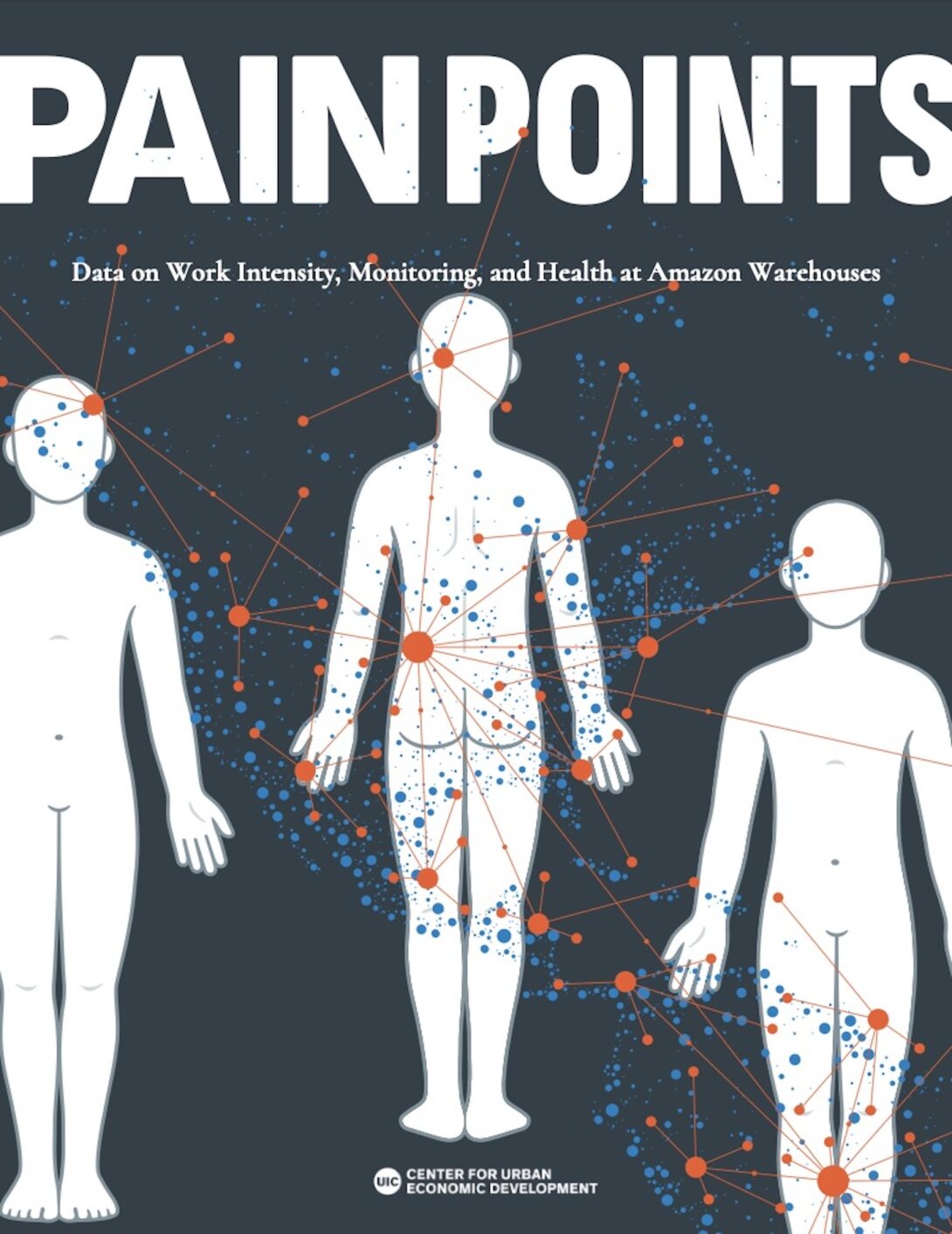Warehousing & Supply Chain Research
Pain Points: Data on Work Intensity, Monitoring, and Health at Amazon Warehouses Heading link

by Beth Gutelius and Sanjay Pinto.
The leading online retailer in the United States by some distance, Amazon has also grown to become the country’s largest employer of warehouse workers, with a workforce of more than 700,000. Media reports and government investigations have raised concerns about the pace and monitoring of work at Amazon and the safety and health of its workforce. Based on a national survey of 1,484 frontline Amazon warehouse workers across 451 facilities and 42 states, the findings indicate that a logistics system geared towards unrelenting speed and maximum customer convenience exacts a heavy toll on the health and wellbeing of many Amazon warehouse workers. In turn, this health toll brings unmeasured economic impacts, given the immediate costs of unpaid time off from work and the potential long-term effects of pain, injury, and burnout on workers’ livelihoods. Stronger regulatory guardrails and advances that afford workers greater voice and input could help to improve working conditions at Amazon.
A Forum on Emerging Technologies Heading link

by Adam Litwin, Jessie Hammerling, Francoise Carre, Chris Tilly, Chris Benner, Sarah Mason, Steve Viscelli, Beth Gutelius and Nik Theodore
As part of ILR Review’s new special series “Novel Technologies at Work,” this article introduces a forum composed of five industry studies that examine the drivers and impact of recent and impending technological change. Each of the studies, condensed from longer reports published over the past two years, relies on interviews with sectoral actors and other primary data to determine the relevant technologies confronting workers and managers and the sorts of strategies and policies that will mediate their effects.
The Future of Warehouse Work: Technological Change in the U.S. Logistics Industry Heading link

by Beth Gutelius and Nik Theodore
Are “dark” warehouses, humming along without humans, just around the corner? Predictions of dramatic job loss due to technology adoption and automation often highlight warehousing as an industry on the brink of transformation. The potential elimination of many blue-collar jobs is a pressing issue for policy makers and raises important questions about how workers will fare in the economy of the future.
In contrast to reports focusing only on the number of jobs that could be lost, our research offers an in-depth, detailed look at the range of ways in which warehouse work and the industry as a whole might change with the adoption of new technology over the next five to 10 years. The findings in this report are based on in-depth industry research and extensive interviews with a broad set of stakeholders, including industry analysts and consultants, third-party logistics (3PL) operators, retailers, brands, and technology providers. We project that the warehousing industry likely won’t experience dramatic job loss over the next decade, though many workers may see the content and quality of their jobs shift as technologies are adopted for particular tasks.
Taming Globalization: Raising Labor Standards across Supply Chains Heading link

by Nik Theodore, in Fine J, Burnham L, Griffith K, Ji M, Narro V, and Pitts S, eds., No One Size Fits All: Worker Organization, Policy, and Movement for a New Economic Age, 341-358. Ithaca, NY: Cornell University Press (2018).
This chapter examines two approaches for raising labor standards across global supply chains. Focusing on the Asia Floor Wage campaign and the workers’ rights campaign at C.J.’s Seafood, this chapter highlights efforts by labor groups to hold powerful corporations accountable for the employment practices of supplier firms. The campaigns featured here are notable because they target supply chains that span political jurisdictions, link product markets, and mobilize labor forces from various countries. Moreover, while they seek to leverage national laws and enforcement mechanisms, the strategies documented here reflect the regional character of production networks, and by doing so, they reconceptualize the terrain for worker organizing, bargaining, and activism.
Disarticulating distribution: Labor segmentation and subcontracting in global logistics Heading link

by Beth Gutelius
Abstract
An enduring focus of scholarly work on global production networks (GPNs) is the process of insertion into production networks and the capacity of places to shape their manner of inclusion. Sometimes overlooked are ways in which these insertions are based on an evolving set of exclusions. A disarticulations perspective trains our attention on the mutual interplay between moments of inclusion and exclusion that produce uneven geographies and histories of development, foregrounding place-specific factors and offering a framework for understanding local experimentation. In the distribution function of global supply chains, the prevailing value-creation strategy is downward pressure on the cost of labor, but this perhaps suggests a false sense of stability. Using data gathered in the distribution hub just outside of Chicago, I examine the role of labor market intermediaries in re-negotiating the boundaries of inclusion. This article explores processes of linking and delinking subsets of workers and the differential implications for worker segments and their attachment to the supply chain. Inscribed in the absorption of places and workers into GPNs are ongoing processes of disarticulation, evident in this case through the labor market strategies pursued by local firms and temporary staffing agencies. These processes lay bare the mechanisms that reproduce capital-labor relationships in global supply chains.